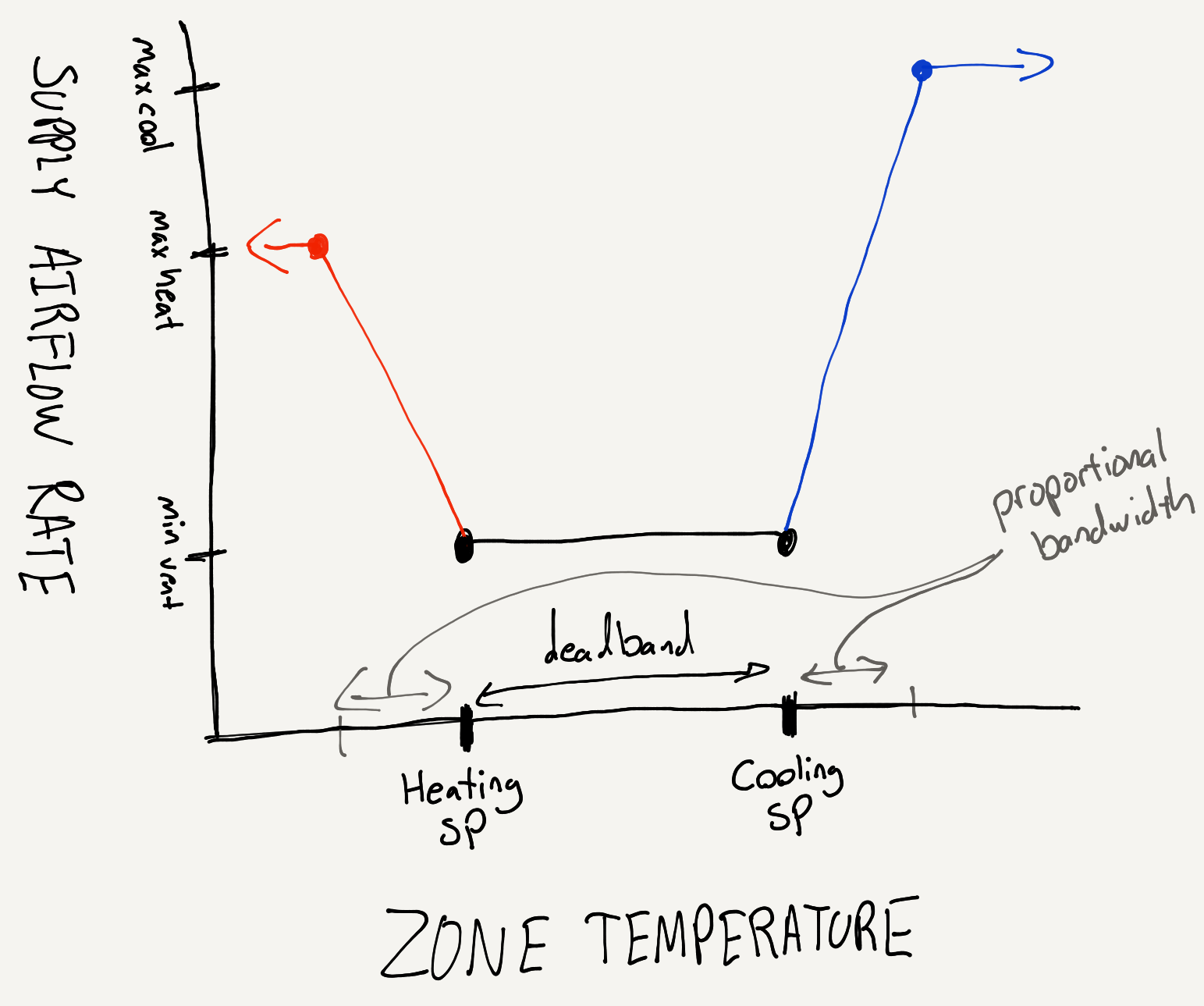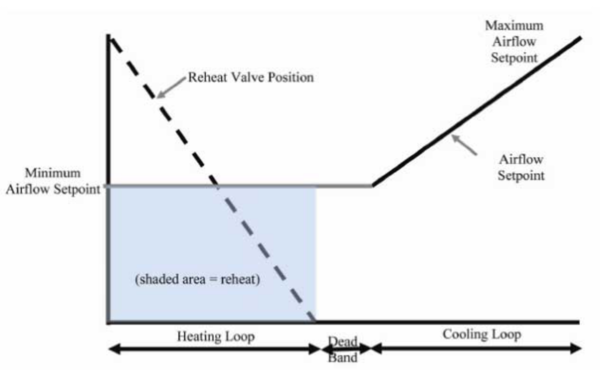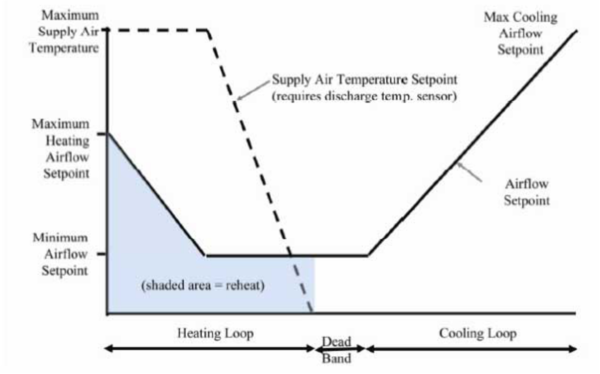Proportional Setpoint Control
Is it possible to define proportional control for supply air flow and temperature in EnergyPlus? I want to set up a proportional control similar to what can be done in IES-VE.
For example (assume a conventional VAV reheat system):
- Heating setpoint is 19C, cooling setpoint is 24C.
- Between these values, neither heating or cooling should be active, because this is the deadband, and airflow should be at a minimum ventilation.
- As space temperature rises above 24C, ramp up the supply air flow rate proportionally between 24 and 26 (assuming there is a 2K proportional bandwidth), and the same with heating down from 19 to 17.
From what I can tell, there is not a good method for setting up this control sequence for the thermostat setpoints without having to get into EMS code. It seems that the standard controllers like ThermostatSetpoint:DualSetpoint with a ZoneControl:Thermostat operate somewhat ideally. I tried using the ZoneControl:Thermostat:StagedDualSetpoint with just one stage because it offers a throttling range, but the results were inconsistent and don't give an option to use proportional instead of whatever is being used. The VAV objects do allow to set min and max flow rates for heating and cooling, but I don't understand how those are used.
Here's a sketch of what I'm trying to do, if that helps to clarify it. I assume this is fairly standard, though I know some terms change around the world.








I updated the text and added a sketch hopefully to make my question clearer.